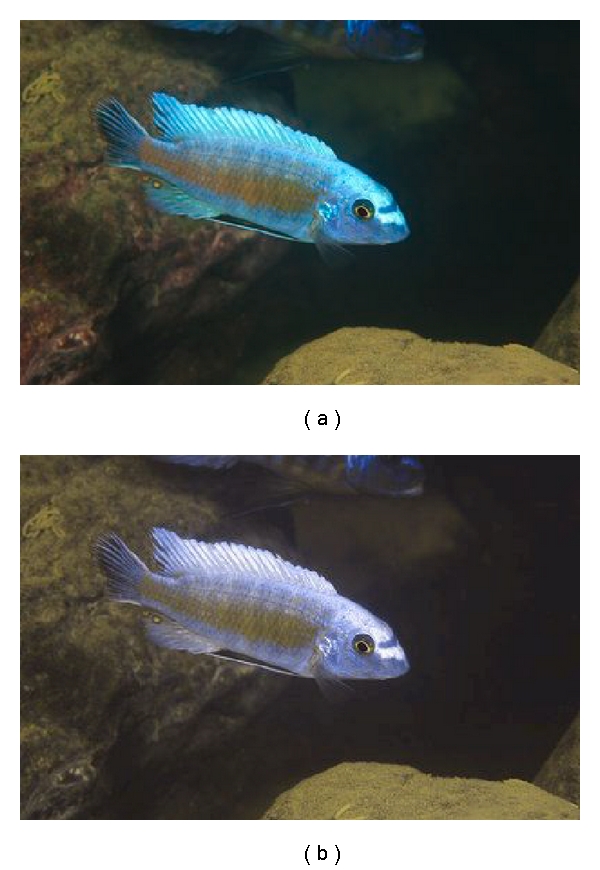Figure 5.

A comparison between the appearance of a predominantly carotenoid-based Labeotropheus color pattern as seen by a trichromatic human (a) and a protanopic human (b). While largely heuristic, this figure illustrates that even without a long-wavelength-sensitive photoreceptor, a protanopic human or mbuna (like a Labeotropheus) could still perceive the contrast between the carotenoid patch at midbody and the rest of the fish. It should be noted that Figure 4(b) does not take into account either the ultraviolet-sensitive photoreceptor of the Labeotropheus or the attenuation of red and orange light at the depths at which this fish, a L. trewavasae from Manda, Tanzania, would typically be found. The original photo (a) is generously provided by Ad Konings/Cichlid Press, and the Daltonized photo (b) was produced from the original using the Vischeck algorithm, available at http://www.vischeck.com.
